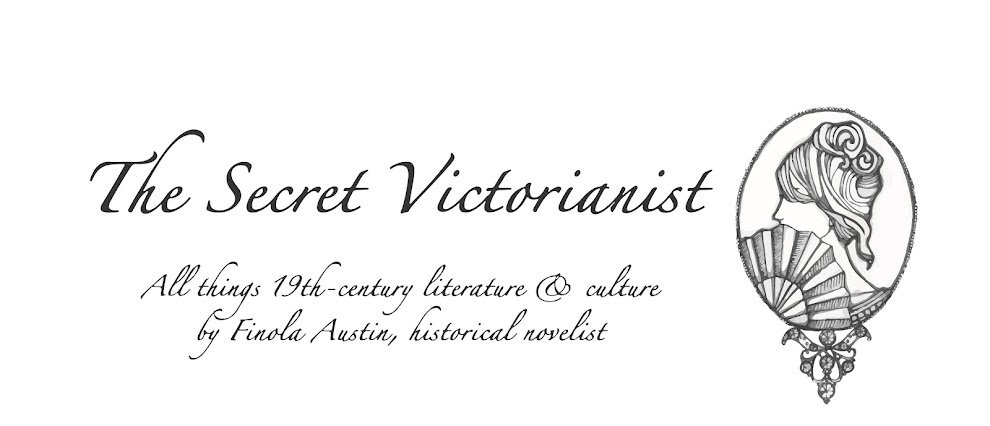Mrs Winstanley in Mary Elizabeth Braddon’s Vixen (1879) is a very foolish woman.
She gives up her independence as a wealthy widow to wed a cruel and controlling
adventurer and fails to protect her only daughter (Violet, the vixen of the title)
from his machinations. She cares only for company and ostentatious display,
racking up large debts with dressmakers and milliners, and is viewed as
childlike and frivolous by all who surround her.
One of Mrs Winstanley’s greatest griefs is her daughter’s size.
She and her likeminded friends agree that ‘[Violet’s] figure is quite splendid;
but she's on such a very large scale’ and is so fit to be painted ‘as Autumn,
or Plenty, or Ceres, or something of that kind, carrying a cornucopia. But in a
drawing-room she looks so very massive’. When you finally read what Violet’s
measurements are however, you may be surprised.
Braddon writes: ‘Lest it should be supposed…that Vixen was a giantess, it may be as well to state that her height was five feet six, her waist twenty-two inches at most’.
Braddon writes: ‘Lest it should be supposed…that Vixen was a giantess, it may be as well to state that her height was five feet six, her waist twenty-two inches at most’.
With the average woman’s waistline in the UK now coming in
at 34 inches, how are we to read this information? Braddon certainly doesn’t
think Violet is a giantess – does this mean the figure of 22 inches is a gross
exaggeration, part of the satire she directs at women like Mrs Winstanley? Yet Vixen is one of Braddon’s most true-to-life
novels, filled with realistic domestic details. And it is not the only period novel
to be populated by women with 18 inch waists like Violet’s rival for the love
of Roderick, Lady Mabel, the picture of ‘ethereal loveliness’.
 |
| Vivien Leigh and Hattie McDaniel in Gone with the Wind |
The most famously thin heroine, Scarlett O’Hara, in Gone with the Wind (published 1936, but
set in the nineteenth century) gets down to 17 inches with the help of some
corsetry, yet this is described as unusual –‘the
smallest in three counties’ – especially when combined with ‘breasts well matured for her sixteen years’.
While the
internet seems obsessed with these incredible Victorian waistlines however,
some academic investigation suggests that they belong entirely in fiction. A survey of a thousand Victorian dresses at the Museum of Costume in Bath found
the smallest to be 21.5 inches – a size which could be achieved by a modern UK size
6 or 8 woman with the help of a heavy duty corset.
A miniscule
waist is just one of the long list of attributes and virtues possessed by the
idealised nineteenth-century heroine and Braddon’s description of Violet could
be read as ironic commentary on other writers’ lack of realism, similar to
George Eliot’s complaints in ‘Silly Novels by Lady Novelists’, where she
describes the stereotypical female protagonist: ‘Her eyes and her wit
are both dazzling; her nose and her morals are alike free from any tendency to
irregularity; she has a superb contralto and a superb intellect; she is
perfectly well dressed and perfectly religious; she dances like a sylph, and
reads the Bible in the original tongues’.
One last point to consider is
that being sylphlike is not the only standard of beauty. In Charlotte Bronte’s
novels, for instance, skinniness is the attribute of the plain and overlooked
woman, while beauties are fleshy. Jane Eyre contrasts the ‘harsh lines’ of her
face and figure with ‘harmonious lineaments’ and ‘dazzling and round arm’ of
Blanche Ingram, Lucy Snowe in Villette
mocks the apparently unrealistically large object of male fantasy in the ‘Cleopatra’
portrait whose ‘commodity of bulk, would infallibly turn from fourteen to
sixteen stone’.
Braddon mocks the unnaturalness
of sylphlike beauty, Bronte the implausibility of voluptuous femme fatales,
but, while the exact measurements may seem unfamiliar, both are commenting on
the difficulties of conforming to standardised versions of beauty in a way
which seems alarmingly and recognisably modern.
 |
| Charlotte Bronte |
 |
| Mary Elizabeth Braddon |
Have you read a
nineteenth-century novel which includes a heroine’s measurements? Let me know in
the comment section below or on Twitter, by tweeting @SVictorianist.

No comments:
Post a Comment